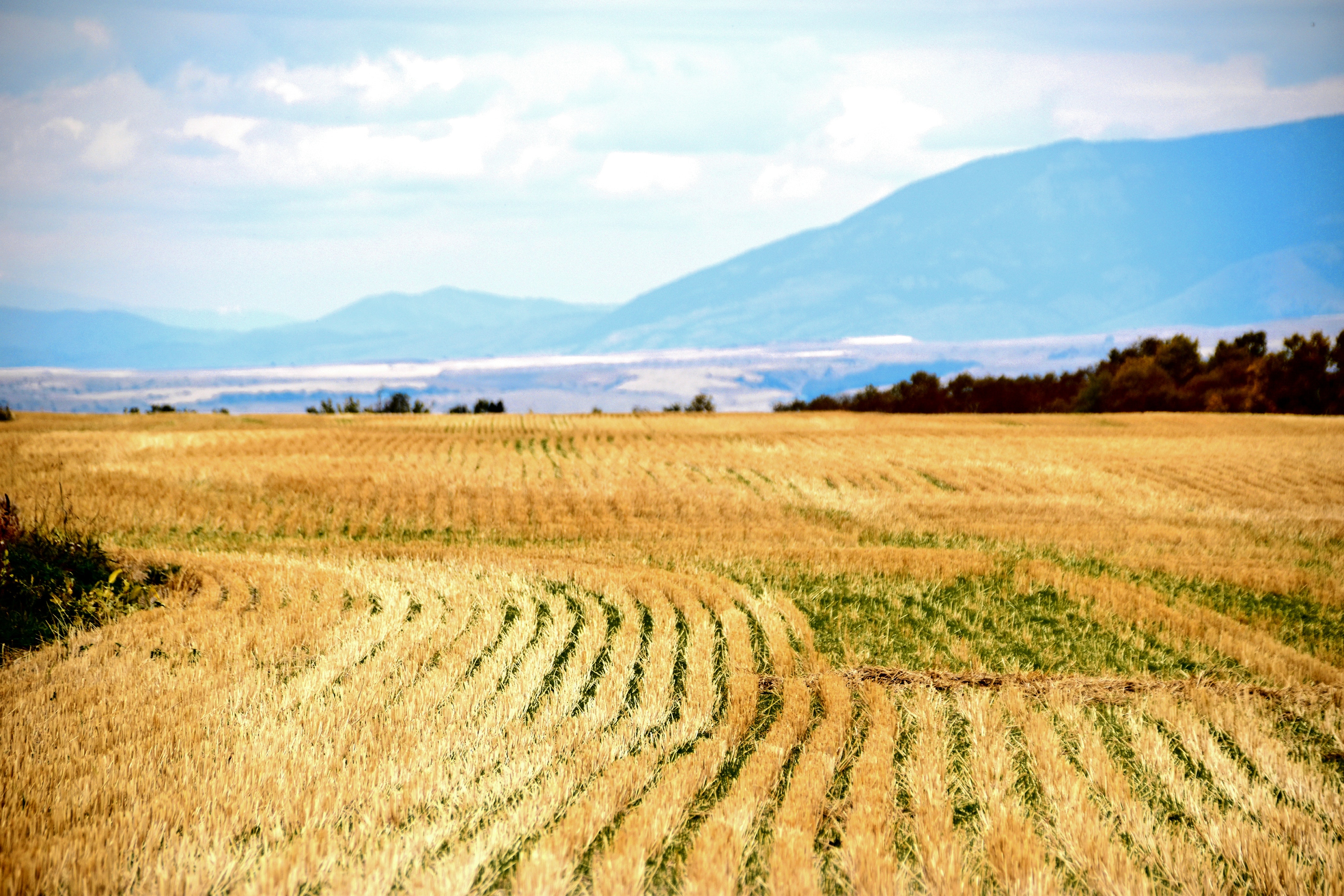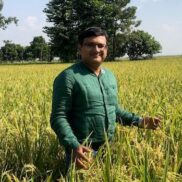Carbon Credits and Sustainable Agricultural Practices – An Overview

This post is also available in:
This post is also available in:
![]() Français (French)
Français (French)
Sustainable agriculture is an integral part of the solution to climate change and is essential to achieve a more sustainable and resilient food system. Agricultural activities, such as the production of crops and livestock, are significant sources of different greenhouse gases (GHG), including carbon dioxide (CO2), methane (CH4), and nitrous oxide (N2O). By adopting sustainable agricultural practices, it is possible to reduce GHG emissions from agriculture and allied activities. Sustainable agricultural practices are farming methods that aim to produce food, fiber, and other agricultural products in a way that is economically viable, environmentally responsible, and socially beneficial. These practices aim to meet the needs of the present without any negative impact that may affect future generations to meet their own needs.
As carbon credit, we define a financial instrument that has the reduction in greenhouse gas (GHG) emissions as the underlying. Carbon credit encourages businesses, governments, and other organizations to reduce GHG emissions by providing a financial incentive. The carbon credit generation system helps developed countries maintain their emission reduction (ER) targets, and developing countries benefit from the finance they receive from developed countries for carbon projects that would generate carbon credit.
Therefore, there is a synergy between sustainable agriculture and carbon credits; implementing sustainable agricultural practices helps remove (through sequestration) or avoid carbon emissions (by practicing “reduction” or “avoidance” methods) from the ecosystem that a farmer can earn in terms of “carbon credits.”
There are many different ways to define and approach sustainable agriculture, and there is no one-size-fits-all approach. However, several principles are commonly associated with sustainable agriculture that can lead to carbon credit generation, and the practices are termed “carbon farming.”
Sustainable Agriculture Practices and Management of Resources and Carbon
Alternative wetting and drying (AWD)
AWD is a science-driven and internationally established rice production technique that allows the rice field to dry out between irrigations. AWD can help reduce water use and greenhouse gas (GHG) emissions in rice production, which can contribute to the goal of sustainable agriculture. The AWD can help to reduce water use in rice production by up to 30%, which can help to conserve water and reduce the energy required for irrigation. Following AWD can help to reduce or “avoid” GHG emissions from rice production by reducing the amount of methane (CH4) produced during rice cultivation. Methane is a potent GHG and is more than twenty-five times as potent as CO2, and reducing CH4 emissions can help to mitigate climate change. It can also help to improve soil health by reducing the amount of standing water in the field and improving the soil structure.
Cover Cropping:
Cover crops are the plants that are grown between main crop seasons to protect the soil (e.g., from erosion), improve soil health, and provide economic and other ecosystem benefits. The cover crop is a sustainable agricultural practice that can help achieve sustainable agriculture goals such as reducing hunger and poverty. Cover crops help to reduce soil erosion by protecting the soil surface and stabilizing the soil structure. They also help to improve soil health and reduce the need for synthetic fertilizers and pesticides. This is accomplished by adding organic matter to the soil, increasing soil fertility, and improving soil structure. These plants can help increase crop yields and reduce the need for synthetic fertilizers and pesticides during the cultivation of the “main” crops. Cover crops can help to reduce water use by improving water infiltration and retention in the soil, reducing the need for irrigation. At the same time, using such plants helps reduce the incidence of pests and diseases by creating a more diverse ecosystem (boosting agrobiodiversity) and serving as a host for predatory insects and other beneficial organisms that takes part in the control of crop pests. Finally, cover crops facilitate sequestering carbon in the soil, which can help mitigate climate change by removing CO2 from the atmosphere.
Zero Tillage:
Zero tillage (ZT), also known as conservation tillage or no-till agriculture, is a farming practice that involves planting crops directly into the soil without disturbing the soil through tillage or ploughing (reversing, disrupting, and exposing lower soil layers). Zero-tillage can help to achieve many sustainable agriculture goals. This technique helps to reduce soil erosion by protecting the soil surface and stabilizing the soil structure. At the same time, it promotes soil health and reduces the need for synthetic fertilizers and pesticides, while it reduces water use and, as a result, the need for irrigation. Zero tillage can help to sequester carbon in the soil by reducing the amount of soil disturbance and increasing the amount of organic matter present in the soil. Finally, it can help to mitigate climate change by removing CO2 from the atmosphere.
(Crop-Plant) Residue Management:
Residue management in agriculture includes the management of stubbles, stalks, leaves, branches, and other plant material produced by the crops and left at the field after crop harvest. Crops harvested with combined harvesters keep higher residue in the field, while hand harvesting keeps less residue. Residues can be incorporated into the soil as organic matter, improving soil health and fertility. It can protect soil moisture by reducing water evaporation and improving water availability for crop plants (by improving water infiltration). This will reduce drought stress on the plants, and the irrigations and increase crop production. Additionally, incorporating plant residues in the soil can boost the soil biodiversity of beneficial organisms. At the same time, it is a useful and efficient strategy to disrupt the life cycles of pathogens – diseases and pests.
There are several approaches to managing residues in agroforestry systems, including incorporating them into the soil as organic matter, using them as animal feed, or converting them into bioenergy or other value-added products. The specific approach will depend on the particular context and goals of the agroforestry system. These approaches sequester carbon in the terrestrial ecosystem and help to mitigate climate change by removing CO2 from the atmosphere.
Conservation agriculture, including cover cropping and zero tillage, can help to increase the amount of carbon stored in the soil, which can be quantified and used to generate carbon credits.
There are many other sustainable agricultural practices that can create carbon credits. For example, properly managing livestock manure can reduce/avoid methane (CH4) emissions. Capturing methane from manure through anaerobic digestion and using it as a bioenergy source can generate carbon credits. Similarly, improving the efficiency of nitrogen fertilizers can reduce nitrous oxide (N2O) emissions. The use of slow-release fertilizers or precision fertilization reduces the N2O emission. Nitrous oxide is 300 times more potent than CO2 and a reduction in N2O use can generate carbon credits.
Overall, sustainable agriculture practices have the potential to generate carbon credits by reducing GHG emissions and increasing carbon sequestration, which can help to mitigate climate change and provide a financial incentive for adopting sustainable practices.
An additional Profit with Carbon Farming – Carbon Offsets Protocol and Certification Agencies
Carbon Credits and Sustainable Agricultural Practices – An Overview








































































